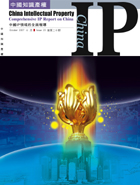
The counterfeiting problem in China is usually associated with designer consumer products and luxury goods, such as handbags and watches. However, the counterfeiting of industrial parts is a growing problem, unbeknownst to most consumers and end users. These parts are typically sophisticated technical products that are used in industrial products. The parts themselves are usually small components in a much larger industrial system. One company facing this problem is the Danfoss Group, a Denmark-based multinational and a leader in the development and production of mechanical and electronic products and solutions. We recently spoke with Eskil Berg Kappel, Danfoss China’s Legal Counsel about Danfoss’ IP strategy and related activities in China and share his comments and perspective. Mr. Kappel has been legal counsel at Danfoss since January 2005, and has lived in Beijing since 2003. He is an expert on China’s IP legal system and the problems confronted by industrial parts manufacturers in China.
The Danfoss Group’s Background
Danfoss, is one of Denmark’s largest industrial groups with annual sales of US$ 3billion and more than 21,000 employees worldwide. Mads Clausen founded the company approximately 75 years ago in Havnbjerg, Denmark, and it remains family-owned today. The Danfoss group is a well-known international manufacturer with a leading position in refrigeration and air-conditioning heating and water controls and motion controls.
Danfoss entered the Chinese market in the mid 1990s and currently has six legal entities in China with more than 2,000 employees. China is part of Danfoss’ global manufacturing base with major manufacturing plants in Wuqing, Tianjin and other parts of China. Danfoss also has subsidiaries and sales offices in most major cities, including Beijing, Shanghai, Guangzhou and Tianjin.
With respect to its intellectual property, the company’s Denmark headquarters coordinates all IP generation/filing activities, both domestically and internationally, and the company is careful to obtain trademark and patent registrations for all its products and inventions, including in China.
According to Mr. Kappel, approximately seven years ago Danfoss began to see problems in China and India with companies using similar names. Presently, Danfoss China has three people working on monitoring IP developments in China and recently, it has seen changes in its IP situation, with more of its products copied here and sold worldwide.
Danfoss’ IP Strategy
Danfoss China’s basic IP strategy is designed to decrease counterfeiting and to ultimately eliminate it entirely. In China, Danfoss pursues strong action when confronted with infringing products. Mr. Kappel advised that Danfoss works closely with Chinese administrative agencies, including the Customs, the Administration for Industry and Commerce (AIC) and Technology Supervision Bureau (TSB) to discover and ferret out infringing products and to directly confront infringers when possible. Danfoss also pursues civil litigation when appropriate, however, Mr. Kappel said, “most cases are pursued through the Customs, AIC and TSB because these agencies are most accessible, actions against infringers are easier to start, less costly and actions to confront infringers are swifter”.
He noted that recently the Customs contacted Danfoss out of the blue to advise that they had seized suspicious products with the Danfoss trademark and requested that Danfoss confirm that the seized goods were in fact counterfeits. Mr. Kappel appreciated the Customs’ efforts and said that he finds most Customs offices quite receptive and helpful when approached for assistance. However, he said the lack of uniform standards and guidelines for the offices of all the administrative agencies at the local level is problematic and most matters are dealt with on a case-by-case basis.
Danfoss also works closely with end users to obtain information concerning counterfeiting and also engages in promotional campaigns to explain to potential end users the risks associated with purchasing parts from unauthorized distribution channels as the parts are likely to be counterfeit. Mr. Kappel explained, “To Danfoss, counterfeiting is more than just a financial issue. We see it as a public safety and health issue, as well as a question of quality. Counterfeiters are responsible to no one when they counterfeit, which means they could care less about quality and safety.” Consequently, Danfoss works to raise the public awareness of the counterfeiting problem by having an open policy with the media both in China and elsewhere, and also works directly with end users of its products by placing posters in areas in China where its counterfeited products surface.
Danfoss is also a member of the Quality Brand Protection Committee (QBPC), which is an industry lobbying group concerned with the protection of intellectual property rights in China. It has more than 130 multinational members that have more than US$70 billion invested in China. Mr. Kappel is the Vice Chair of the Communication Committee and the Coordinator of the Refrigeration and Air Conditioning Working Group of QBPC. He advised that Danfoss’ experience with IP protection is similar to the experiences of all industrial parts makers in China. “We share experiences with companies facing similar situations and work with them and the Chinese government to improve the IP environment in China. QBPC is committed to help the Chinese government deal with IP issues to improve the situation. Together with the Chinese government, we are making a lot of headway to reduce the counterfeiting problem.”
Danfoss also cooperates with the European Union and its IPR office, as well as with the U.S. Embassy IPR Attaché when appropriate.
Danfoss v. Shandong “Danfoss” Company
While Danfoss pursues most IP infringement matters through China’s administrative agencies, Danfoss recently prevailed in a civil case against a Shandong-based company that was blatantly abusing Danfoss’ trademark by bearing the “Danfoss” Chinese name in its company name and when marketing its products. As Danfoss felt that the serious nature of the trademark infringement case caused severe damage to the Danfoss brand name, the company decided to pursue civil litigation.
After the First and Second Instance Trials and Appeals process, Danfoss ultimately prevailed on June 29th 2007, when the Beijing High People’s Court upheld the Beijing Second Intermediate People’s Courts’ judgment ordering the Shandong-based company to cease using the “Danfoss” trademark on the same or similar goods, to nullify its website, publish an apology, and to pay compensation of RMB150, 000.
Mr. Kappel said that Danfoss was pleased with the outcome of the case and that the Shandong-based company’s infringing products have not been seen recently on the market. However, compensation has yet to be paid and Danfoss is working to get the court to enforce its judgment. Mr. Kappel also advised that this litigation would not likely be the last civil case Danfoss pursues to combat infringers.
Outlook for Counterfeiting and IP Protection
According to Mr. Kappel, as far as counterfeiting is concerned, there may be no perfect solution to the problem. Clearly, Danfoss appreciates the efforts of the Chinese government to develop its IP legal system and to combat counterfeiting.
“We can’t expect solutions to the infringement problem overnight. It is certainly impressive what the Chinese government has done to establish its IP legal system. However, it is clear that patience is required.” Most distressing to Mr. Kappel is that while the government has undertaken its efforts to combat counterfeiting and IP infringement, the problem continues to worsen. “The problem is that more and more people in the distribution channel demand more and more counterfeit products, which they are able to sell to parties that may or may not be the end users. Demand comes from everywhere. It is not necessarily driven by suppliers. It is important to increase information so that all stakeholders and especially end users have access to information about the counterfeit products,” Mr. Kappel lamented.
Mr. Kappel also believes that companies need to be intelligent when protecting their own IPR in China. Specifically, companies should be careful when seeking suppliers in China for their products. While obtaining the cheapest price for a product is an admirable goal and generally makes good business sense, sending product specifications to several companies requesting a price quotation can lead to companies counterfeiting the products and selling them after they are not selected to be suppliers. Also, companies need to be aware of the activities of their own distributors, who may be complicitous in counterfeiting activities.
The problems that Danfoss faces with counterfeiting and IPR infringement in China are not unique to Danfoss, but are confronted by other parts manufacturers as well. Ultimately, education, information exchanges and cooperation among companies and the government will lead to a decrease in the parts counterfeiting phenomenon. Mr. Kappel concluded by saying that the “emphasis should be on reducing the number of counterfeits through trademark protection, and to fight the problem together, as parts counterfeiting is really a quality and health-related issue”.
|
Copyright © 2003-2018 China Intellectual Property Magazine,All rights Reserved . www.chinaipmagazine.com 京ICP备09051062号 |
|
|



